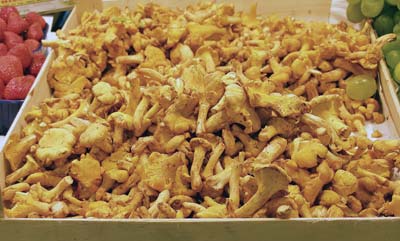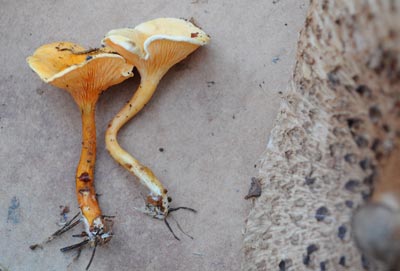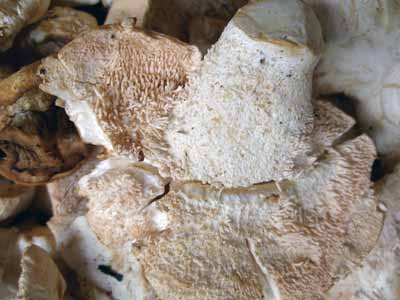
Grey chanterelles. Fluted, trumpet-shaped, wild mushrooms with a ruffled edge, dark grey to black in colour. They are commonly found under pine, beech or birch trees from July until the first frosts and thrive in wet summers. They are usually sautéed in butter with chopped onions, but are not considered as tasty as the horn of plenty, which they resemble.

False chanterelle. As its name implies, this masquerades as a chanterelle but, instead of the egg yellow of the chanterelle, this is a darker orange and sometimes with a graded cap, dark at the centre and becoming lighter towards the edges. The false chanterelle is found in woodland, particularly under pines. It is edible, but is rather bitter and tough and may cause indigestion. It is easily confused with other mushrooms which are poisonous, so especial care must be taken.

Hedgehog fungus. Cream-coloured mushrooms, excellent to eat, easily found in woods from late summer to late autumn (US: fall). They have a sort of downy white stem leading up to a cap which is centrally depressed and under which are masses of little spines, giving the mushroom its English name. It is quite a good mushroom to collect as it is easily distinguished from other mushrooms, is a relative of the chanterelle, and, like it, has good flavour and good retention of texture on long cooking.